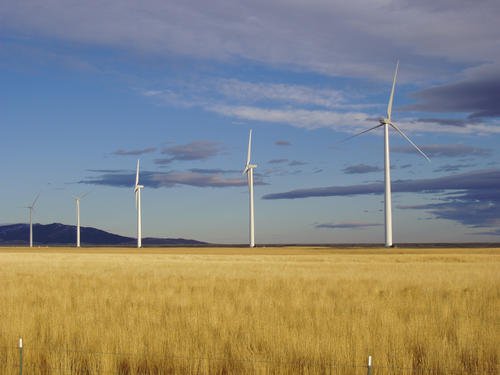Renewable Energy Gets Its Second Wind
Wind and solar generation development is on the rise, thanks to declining costs
- August 22, 2018
- Carol Winkel

Drive along the highway, and it's easy to see the impact of renewable generation in the Pacific Northwest: wind turbines dotted along the hillsides in the Columbia River Gorge and solar panels aligned across farmland in Idaho.
Since 2005, when Montana, followed by Oregon and Washington, enacted renewable portfolio standards to encourage renewable resource development, about 8,500 megawatts of wind and about 540 megawatts of solar power have been added to the grid. One megawatt of wind in the Pacific Northwest produces enough electricity for about 280 homes each year.
The RPS mandates, along with federal tax incentives, helped spur the growth, slowing down after 2012 as utilities began to meet their targets. Uncertainty over whether Congress would renew the federal tax incentives and California's stricter RPS rules, making it harder for out-of-state renewable providers to comply, also discouraged development. About a third of Northwest wind generation goes to California utilities.
Today, according to Gillian Charles, energy policy analyst, renewable development is again on the rise, thanks to a number of changes: Oregon adopted a more aggressive renewable portfolio standard in 2016; corporations like Apple and Microsoft and other large customers are developing or procuring renewable energy on their own; and perhaps most significantly, the cost of wind and solar energy continues to go down. Utilities in the region are contemplating developing more than 3,000 megawatts of new or re-powered generating resources.
"Renewable energy costs have fallen so substantially that a new renewable energy project could be constructed to deliver energy at a lower cost than an existing gas plant," said Mike Starrett, energy analyst.
Transmission is still a major challenge. Right now, access to transmission is extremely limited, and yet new resources are often required to have long-term firm transmission rights. This can ultimately limit the amount of new renewable development, even as a source of low-cost energy. It may be worth studying if this requirement still makes sense, said Starrett.
"There are many paths forward to resolve this barrier, including an enhanced conditional firm offering or market expansion," said Starrett.
Read More:
Connecting Montana's Wind Generation to the Grid



